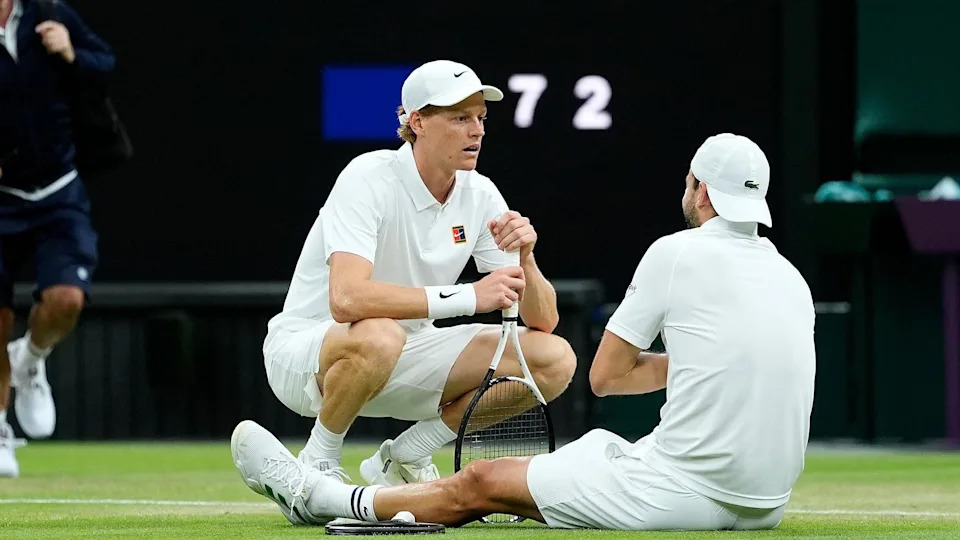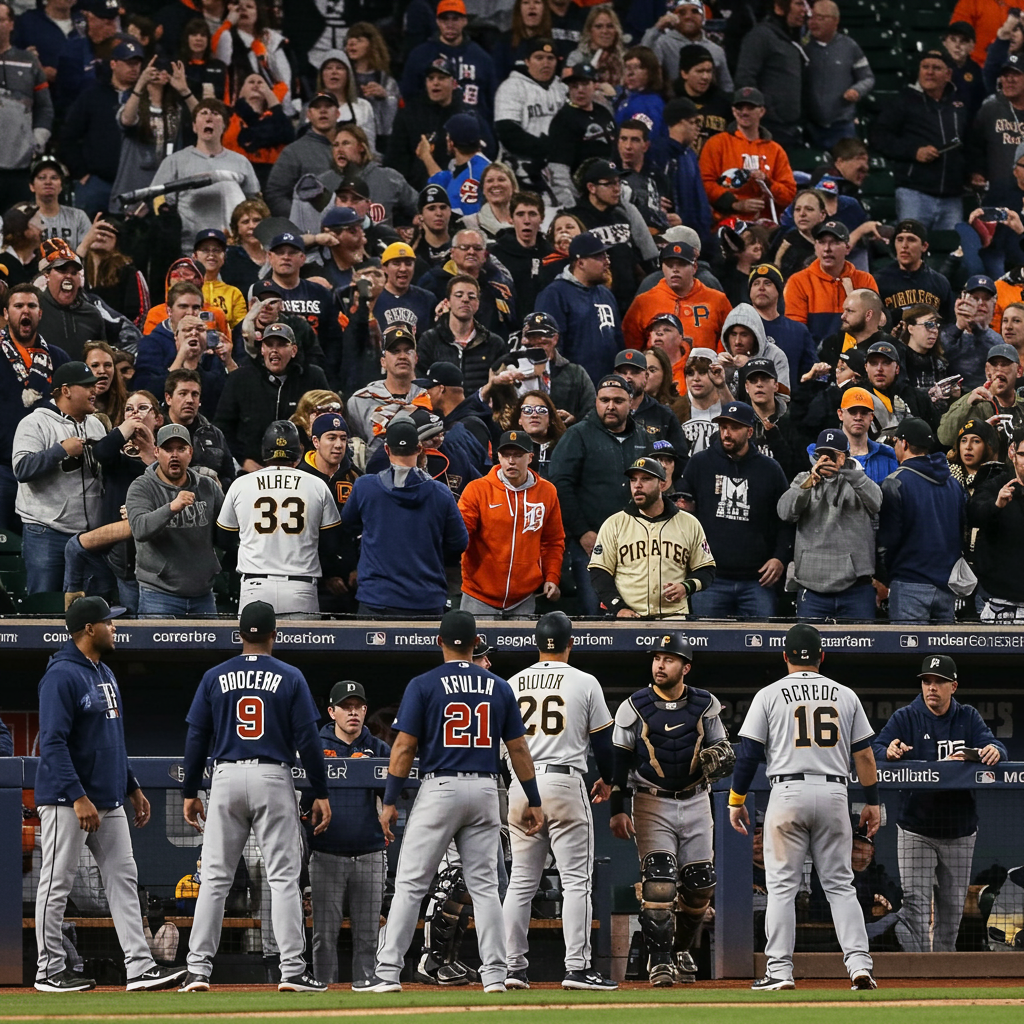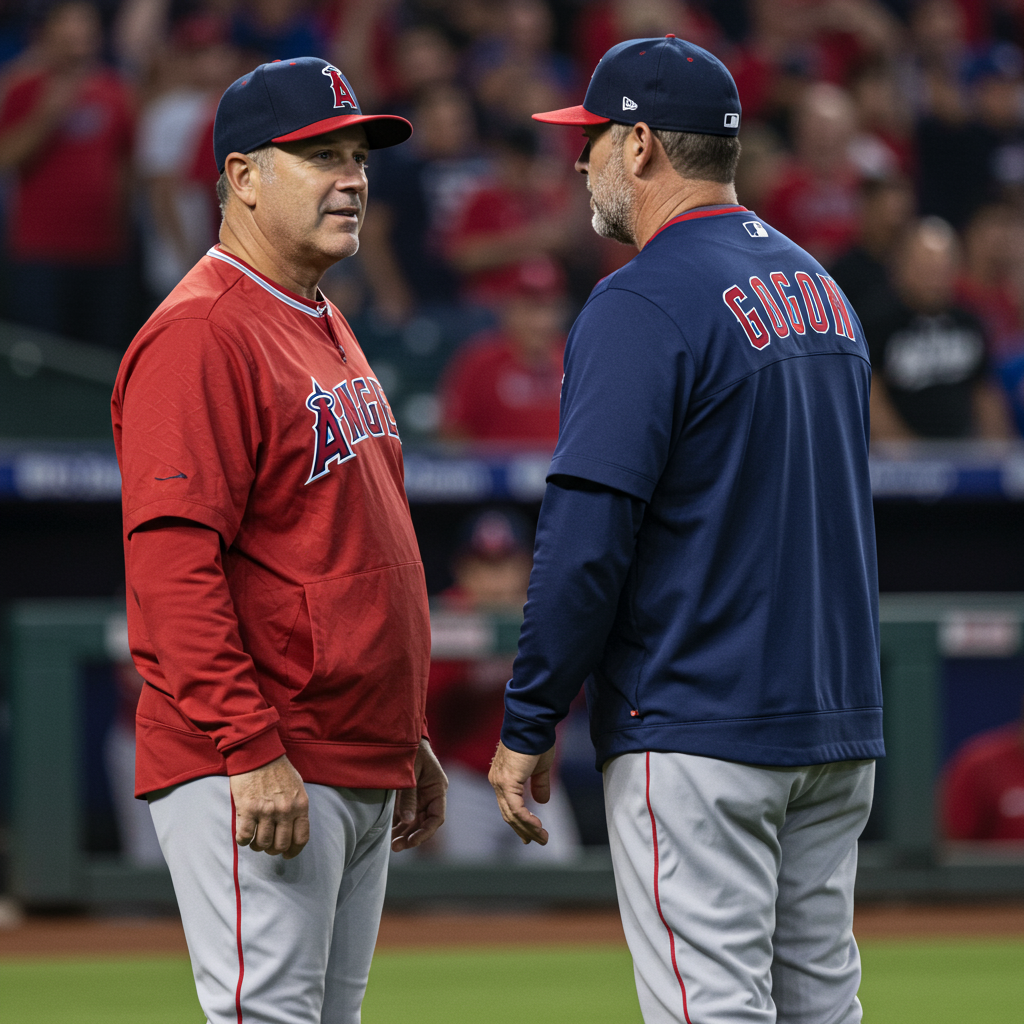A dramatic turn of events unfolded at wimbledon as Grigor Dimitrov was forced to retire from his Round of 16 clash against world No. 1 Jannik sinner due to injury. The unfortunate exit came while Dimitrov, playing some inspired tennis, held a commanding two-set lead over the top seed on Centre Court. This heartbreaking moment denied the Bulgarian a potentially deep run and sent Sinner unexpectedly into the quarterfinals, although the match ended under difficult circumstances for both players. The incident highlights the unpredictable nature of Grand Slam tennis and the physical demands placed on athletes at the highest level.
Heartbreak on Centre Court: Dimitrov’s Sudden Exit
Grigor Dimitrov’s Wimbledon journey came to an abrupt and painful end on Monday, July 7, 2025. Facing tournament favorite Jannik Sinner, the 19th seed was in remarkable form. He led the match comfortably, holding a significant advantage of 6-3, 7-5, 2-2 in the third set. At this stage, he appeared well on his way to one of the biggest upsets of the tournament. However, while serving in the fourth game of the third set, disaster struck for the 34-year-old Bulgarian.
Dimitrov visibly clutched his right pectoral muscle immediately after hitting a serve. He dropped to the ground in obvious discomfort. Medical trainers quickly rushed onto the court to assess the injury. After receiving initial treatment courtside, Dimitrov left the court for a medical timeout. The gravity of the situation seemed clear, even as he initially managed a pained laugh, perhaps reflecting on his string of bad luck.
A Pattern of Grand Slam Injury Struggles
Tragically, this marks an unfortunate trend for Grigor Dimitrov. His retirement against Sinner was the fifth consecutive Grand Slam event where he has been forced to withdraw from a match due to injury. This startling statistic includes retirements at Wimbledon and the US Open in 2024, and the Australian Open and French Open earlier in 2025. While some of these were in early rounds, others, like the 2024 Wimbledon fourth round against Daniil Medvedev and the 2024 US Open quarterfinals against Frances Tiafoe, also saw him unable to finish.
What makes this specific injury retirement at Wimbledon particularly poignant is that Dimitrov was firmly in control of the match. In his prior later-stage retirements, he had been trailing his opponent. This time, he was two sets up against the world No. 1. It represented a significant opportunity to reach his first Grand Slam final since his semifinal run at Wimbledon back in 2014. The packed Centre Court crowd recognized the magnitude of his disappointment, offering a warm and sympathetic ovation as he packed his bags, barely able to lift his injured arm. Sinner showed great sportsmanship, putting an arm around Dimitrov as they walked towards the umpire to shake hands.
Dimitrov’s Dominance Before the Injury
Before the injury abruptly ended the contest, Grigor Dimitrov had been dictating play against a Jannik Sinner who had previously cruised through the tournament. Sinner had dropped minimal games in his opening matches after reaching the French Open final. However, Dimitrov presented a completely different challenge.
The Bulgarian broke Sinner’s very first service game of the match. He maintained this advantage with strong serving throughout the first set, winning 6-3 without facing a single break point on his own serve. Dimitrov continued his aggressive approach in the second set, breaking Sinner again in the opening game. Sinner, showing his resilience, managed to break back later in the set, leveling the score at 5-5. But Dimitrov immediately responded, securing another break of Sinner’s serve before confidently holding his own serve to clinch the second set 7-5 and take a commanding 2-0 lead in sets. His serve, including 14 aces before the retirement, was particularly effective, potentially contributing to the eventual pectoral issue. The match quality was high, with Dimitrov displaying skills that reminded some observers of his early career promise, sometimes dubbed ‘baby Fed’.
Sinner’s Own Injury Scare
Adding another layer of complexity to the match, Jannik Sinner himself experienced a health concern earlier in the contest. Midway through the second set, the Italian world No. 1 fell awkwardly on his right arm during a point. He required a medical timeout to receive treatment on his elbow and wrist.
Despite the fall and subsequent treatment, Sinner was able to return to the court and continue playing. In a twist of fate, he even managed to break Dimitrov’s serve shortly after resuming play, temporarily bringing the second set level at 5-5. However, the incident left a question mark over Sinner’s physical condition. Following the match, Sinner indicated that he felt the effects of the fall significantly, especially on his serve and forehand. He announced plans to undergo an MRI scan on his elbow the following day to determine if there was any serious damage that could impact his continued participation in the tournament.
Moving Forward: Sinner and Shelton
Jannik Sinner advances to the quarterfinals at Wimbledon under circumstances he openly described as undesirable. He will now face American No. 10 seed Ben Shelton. Shelton secured his spot in the last eight with a four-set victory over Lorenzo Sonego earlier on Monday. This quarterfinal matchup presents a significant hurdle for Sinner as he continues his pursuit of a first Wimbledon title. Sinner has already had considerable Grand Slam success recently, winning the Australian Open in 2024 and 2025, and the US Open title in 2024. His progress at Wimbledon depends significantly on his ability to manage the elbow issue revealed during the match against Dimitrov.
In his post-match comments on Centre Court, Sinner expressed genuine sympathy for his opponent. He acknowledged Dimitrov’s high level of play before the injury, calling him an “incredible player” and a “good friend.” Sinner stated that he did not feel the outcome was a true win for him, but rather a “very unfortunate moment” for everyone involved. He sincerely wished Dimitrov a speedy recovery, recognizing the repeated injury setbacks the Bulgarian has faced throughout his career, particularly in recent years.
Frequently Asked Questions
Why did Grigor Dimitrov retire from his Wimbledon match against Jannik Sinner?
Grigor Dimitrov retired due to a significant injury sustained during the third set of his match against Jannik Sinner at Wimbledon on July 7, 2025. While serving, he clutched his right pectoral muscle and was unable to continue playing after receiving medical attention. This injury forced his withdrawal while he held a two-set lead (6-3, 7-5, 2-2) over the world No. 1.
How many recent Grand Slam tournaments has Grigor Dimitrov retired from due to injury?
The retirement against Jannik Sinner marked Grigor Dimitrov’s fifth consecutive Grand Slam appearance ending in an injury retirement. This includes withdrawing from matches at Wimbledon (2024, 2025), the US Open (2024), the Australian Open (2025), and the French Open (2025). This recent pattern highlights a challenging period of physical struggles for the experienced player.
What does Grigor Dimitrov’s retirement mean for Jannik Sinner’s path at Wimbledon?
Grigor Dimitrov’s injury retirement allowed Jannik Sinner to advance to the Wimbledon quarterfinals. While not the desired way to win, Sinner progresses to face No. 10 seed Ben Shelton in the next round. However, Sinner himself had an injury scare during the match, requiring treatment for an elbow issue and planning an MRI scan, which could potentially impact his future matches in the tournament.
A Day of Mixed Emotions
The match between Grigor Dimitrov and Jannik Sinner at Wimbledon ultimately concluded not with a thrilling finish, but with the quiet disappointment of injury. For Dimitrov, it is another chapter in a challenging history of physical setbacks, particularly frustrating given his exceptional performance against the world No. 1 before the issue arose. For Sinner, it means advancing, but overshadowed by concern for his opponent and uncertainty regarding his own physical condition as he prepares for the quarterfinal stage. The dramatic event serves as a stark reminder of the fine line between peak performance and vulnerability in professional tennis.



